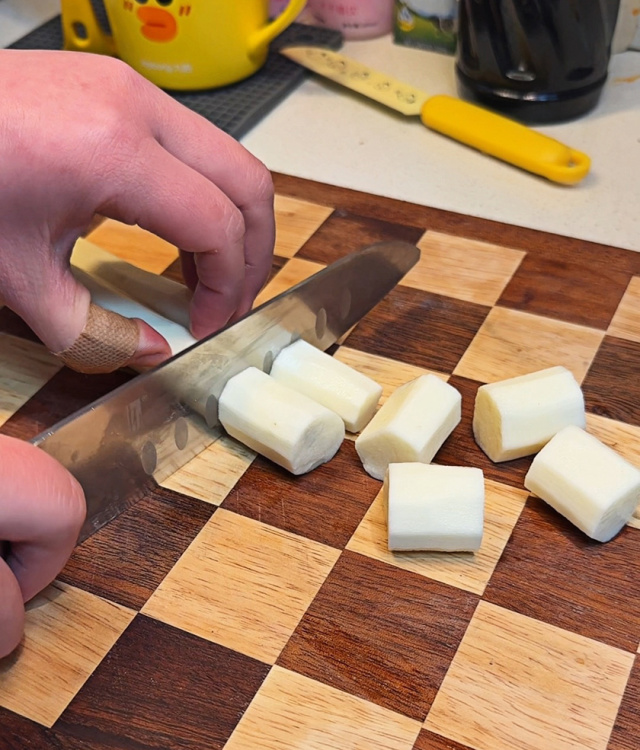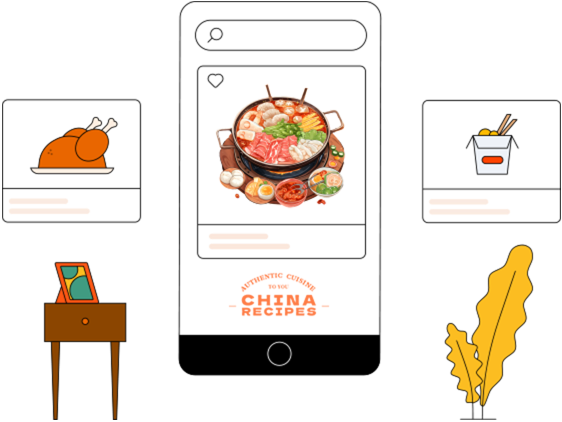Jiangxi Clay Pot Soup – A Traditional Slow-Cooked Chinese Soup

Who hasn't tried Jiangxi Clay Pot Soup yet? This isn't just an ordinary soup. It carries the flavors of Jiangxi that have persisted for thousands of years, cooked in the most traditional way. The soup is incredibly rich, and every sip touches your soul. Come and experience this unique delicacy now!
What is Jiangxi Clay Pot Soup?
Clay Pot Soup is a traditional simmering method of the Han ethnicity in Nanchang, Jiangxi. It is also a representative of Jiangxi cuisine and has a history of over a thousand years.
Its characteristic is the use of small clay pots as containers. Put ingredients and water into the clay pots, then place the clay pots in a large soup cellar (i.e., a hot water boiler) and heat them for a long time in a way of slow cooking with water separation.
The soup is clear and the meat is tender. There is a rich variety of ingredients, such as pork ribs, cuttlefish, chicken soup, etc. It is often paired with medicinal materials like red dates and goji berries. It combines nourishment and deliciousness, reflecting the concept of "the homology of medicine and food". It is a traditional health-preserving delicacy that Jiangxi people often eat throughout the four seasons.
If you travel to Jiangxi, clay pot soup shops can be seen everywhere on the streets. They are similar to fast-food restaurants, offering various flavors of stewed soups.
Ingredients and Substitutes
Pork Ribs:You can choose either pork spare ribs or pork backbone.
If fresh pork ribs are unavailable, frozen ribs are also a good option.
Chinese Yam:Chinese people love to use Chinese yam in soup. Because it has health-preserving functions, it can invigorate the spleen and nourish the stomach. Moreover, it can make the soup thicker and add a smooth and sweet taste.
Chinese yam can be found in Asian supermarkets, or you can choose yamaimo. Of course, you can also use sweet potato as a substitute. Although the taste is slightly different, it can still increase the richness of the soup.
Red Dates:Choose dried red dates. Stew them with spareribs to add a natural sweetness to the soup and have a certain nourishing effect at the same time.
Ginger:Cut it into thin slices. Put a few slices when blanching the spareribs and when stewing the soup. It can remove the fishy smell of the spareribs and enhance the flavor of the soup.
Green Onion:Tie one green onion into a knot and put it into the pot when blanching the spareribs to help remove the strange smell.
Goji Berries:These are mainly added for color and a touch of sweetness. If you don’t have them, you can skip them or substitute with chopped green onion for garnish.
Seasonings:
Salt: To maintain the original flavor, this soup doesn't require other seasonings. A little salt is enough to make it delicious.
Cooking Wine: Mainly add a little when blanching the spareribs to help remove the fishy smell of the meat.
Necessary Tools
Small Clay Pots (4): As cooking containers, they are used to divide the ingredients and soup. You must use small heat-resistant clay pots, which are suitable for long-term steaming. You can buy them through Amazon. Search for "Clay Pot for Cooking" or "Small Clay Soup Pot".
Steamer: Used to place the small clay pots for steaming. It is recommended to choose a stainless steel steamer or an electric steamer.
Pot: Used for blanching the spareribs.
Strainer: Convenient for fishing out the spareribs.
Gloves: To prevent hand itching when dealing with Chinese yam.
Is it safe to cook food in a clay pot?
Yes, it is safe.
Qualified clay pots are made of natural clay. They have stable properties and do not release harmful chemical substances, and can retain the original flavor and nutrients of ingredients well. However, the following points need attention:
Choose clay pots with lead-free glaze or high-temperature glaze to avoid the possible release of heavy metals from inferior glazes.
Avoid rapid cooling and heating (such as directly pouring cold water when the pot is hot) to prevent cracking.
It is suitable for slow stewing. With a relatively stable temperature, the risk of harmful substances leaching out can be reduced.
Does food cooked in clay pot taste different?
Yes, food cooked in a clay pot usually tastes stronger and more delicious.
Compared with metal cookware, clay pots have good air permeability and heat retention properties, allowing the food to be heated evenly.
Slow stewing enables the flavors of the ingredients to fully blend and be released. The cooked food is often more flavorful, and the soup is also richer and more mellow, with a unique "fragrant aroma".
INGREDIENTS
Main Ingredients
-
·500g pork ribs (cut into pieces)
-
·400g Chinese yam (cut into 3 cm pieces)
Additional Ingredients
-
·4 dried red dates
-
·6 slices ginger
-
·1 green onion
-
·10g goji berries
Seasonings
-
·1 tsp salt (1/4 tsp per jar, adjust to taste)
-
·2 tbsp cooking wine (for blanching)
Table of Contents
COOKING STEP
Step 1
Blanch the pork ribs:
Put the pork rib into the pot with cold water, add 1 green onion, 2 slices of ginger and 2 tbsp of cooking wine. Turn off the heat as soon as the water boils.
Take out the pork ribs, rinse them thoroughly with warm water, drain and set aside.

Step 2
Prepare the ingredients:
Peel and section the Chinese yam, wash the red dates, slice the ginger, soak the goji berries until soft and set aside.

Step 3
Divide into clay pots:
Add water to the steamer until it is half full, and put 4 small clay pots in it.
Put some pork ribs into each small clay pot, then put one red date and one slice of ginger in each. Finally, add water until it is eight-tenths full.

Step 4
First steaming:
Cover the clay pots, cover the steamer, and steam over medium-low heat for 30 minutes.

Step 5
Add Chinese yam and steam again:
Open the clay pots, put about 100g of Chinese yam sections into each pot, and continue to steam over low heat for 40 minutes.

Step 6
Seasoning:
After turning off the heat, sprinkle an appropriate amount of goji berries and 1/4 tsp of salt (taste first and then adjust) into each pot.

Step 7
Serve:
Carefully take out the clay pots to avoid scalding.
The soup is fresh and delicious, and the pork ribs are tender and soft. Enjoy!

More Soup Recipes Worth Trying
Black Fungus Red Date Soup Recipe
Chinese Lotus Root Soup With Pork Ribs
Secrets to Success
The key to blanching:
Put the pork ribs into cold water and add scallions, ginger, and cooking wine to remove the fishy smell more thoroughly. After blanching, be careful to rinse them with warm water to preserve the tenderness of the meat. Rinsing with cold water will make the meat shrink and become tough.
Prevent yam from oxidizing:
Immediately soak it in water or pour white vinegar on it after peeling to avoid blackening.
Layer the ingredients in the pot:
Put the pork ribs at the bottom and add the yam later to prevent it from becoming too soft and losing its shape after long steaming.
Control the heat:
Steam for 30 minutes for the first time to bring out the freshness of the pork ribs. Then simmer on low heat after adding the yam to make the soup clearer.
Add salt at the end:
Avoid adding salt too early, which can cause the meat to shrink. Seasoning before turning off the heat will make the soup more delicious.
Serving Suggestions
Enjoy while it's hot:
The freshly cooked clay pot soup is full of fragrance. When the temperature is suitable, the taste of the soup is the best, and the flavors of the pork ribs and yam are the richest.
Serve with staple food:
It can be served with staple foods such as rice and noodles, which can not only keep you full but also make the nutrient intake more balanced.
Serve with light vegetables:
Such as stir-fried romaine lettuce or garlic broccoli, which can relieve greasiness and increase appetite.
Storage advice:
Leftover soup can be refrigerated for 2 - 3 days. Just heat it over low heat before eating.
Suitable for people:
Suitable for those with weak constitutions, the elderly, and people in need of nourishment.
Recipe Variations
Vegetarian version:
Replace the pork ribs with corn, lotus root, and mushrooms, and add dangshen to enhance the aroma.
Ingredient substitution:
You can replace the pork ribs with chicken, beef brisket, pig's trotters, or mutton to make clay pot soups with different flavors.
For example, replace the yam with corn and carrots to increase the sweetness and richness of the soup.
Flavor adjustment:
Friends who like spicy food can add an appropriate amount of dried chili peppers or chili oil to the soup to add a spicy flavor.
If you like sourness, you can add a few drops of white vinegar before taking it out of the pot to make the taste of the soup more layered.
Add nourishing ingredients:
Add Chinese medicinal materials such as longans, astragalus, and angelica to further enhance the nourishing effect of the soup, which is suitable for people with weak constitutions.
Adjust the soup base:
You can add bone broth or chicken broth instead of plain water to make the soup base richer.
FAQs:
If you don't blanch the ribs, the soup may have a fishy smell or a lot of floating foam.
It is recommended to skim off the floating foam during blanching. After blanching, rinse off the blood foam with warm water. Or add 1 tablespoon of flour, knead the pork ribs, then rinse them. Make sure there are no impurities on the pork ribs before stewing.
Next time, cut the yam into slightly thicker pieces and delay the time of putting it into the clay pot. For example, after the initial steaming for 40 minutes, put the yam in and continue to steam for another 30 minutes.
If you don't like too much oil, you can use a spoon to skim off the floating oil on the surface. You can also let the soup cool down, then put it in the refrigerator. The oil will solidify on the surface and be easier to remove.
But I must remind you: For the clay pot placed in the steamer, there is no need to add water in the middle. The amount of water in the pot should be added enough at once (about 80% full) when filling the pot. Adding water in the middle will spoil the flavor.
It is recommended to pressure-cook for 15 minutes first, release the pressure, then open the pot, add the yam, and simmer over low heat for 15 minutes.
If you like a softer texture, you can add them 5 minutes in advance.

















